Libyan Food Dishes: Basic Overview
Common Ingredients
Common Cooking Methods
Courses
Meals
Key Taste
Eating Etiquette
Meal Presentation
Culinary Festivals
Influence and Fusion
Popular Types of Libyan Dishes
-
Bread and Doughs
Bread and dough-based recipes in Libya range from simple, everyday flatbreads to more complex pastries that may contain fillings or toppings.
These breads can be freshly baked, fried, or even steamed.
They often pair with main dishes or are enjoyed with tea or coffee.
-
Soups and Stews
The soups and stews’ components are meats, vegetables, and legumes.
These dishes are flavored with a mix of spices characterized by North African cuisine.
-
Steamed and Boiled Dishes
Libyan steamed and boiled dishes provide hearty meals with simple ingredients.
These dishes use grains, legumes, vegetables, and meats, often enhanced with herbs and spices.
Steaming and boiling are favored in the country since these methods can preserve the ingredients’ natural flavors and nutritional values.
I’m sure you don’t want to miss these Libyan dishes because this country has a fusion of culinary influences, merging Berber, Arab, and Mediterranean traditions with notable Ottoman and Italian touches, especially in Tripoli (the capital city of Libya).
Italian culinary practices loom large in Libya, with pasta dishes and a variety of seafood reflecting the city’s Mediterranean connections.
Meanwhile, the cuisine of southern Libya leans more towards traditional Arab and Berber flavors, emphasizing locally available fruits and vegetables like figs, dates, oranges, apricots, and olives.
Common cooking methods in the country are grilling, boiling, frying, stewing, and baking. Libyan delights also feature complex tastes, including the savory depth of spices, and the freshness of herbs, with the hearty textures from grains like barley and couscous.
Besides learning 22 common dishes in Libya, I’ll also provide you with some insights regarding traditional foods, their popularity around the globe, and the healthy side of these Libyans’s foods.
After that, make sure you don’t skip the dining etiquette in the country and some ideal pairing with beverages to improve your dining experience. Are you excited yet? It’s time to dive in!
22 Popular Libyan Dishes with Filters
Now, it’s time to discover the top 22 Libyan culinary delights, carefully selected for their widespread acclaim. Use the filters to navigate various dishes, sorting them by taste, main ingredients, categories of dishes, cooking methods, etc.
Moreover, I’ll highlight some elements of Libyan specialties through six groups, including the most common, traditional, national dishes, street foods, fusion, and exotic delights.
Couscous is considered Libya’s national dish, often served with vegetables, meats, and sauces.
Couscous
- National
- Traditional
Couscous is a staple food in Libya made from rolled durum wheat semolina. This dish is rich in nutrients and vitamins, making it a healthy addition to your diet.
Originating from North Africa and recognized by UNESCO as part of the Intangible Cultural Heritage List, couscous often includes cereals like bulgur and sorghum for enhanced flavor.
In Libya, the two main varieties are couscous Belbulsa, featuring onions, chickpeas, meat, and spicy sauce, and couscous Belkhodra, which includes additional vegetables.
Bazin
- Traditional
Bazin is a special kind of bread in Libya usually made from barley, salt, and other ingredients. The boiled barley dough is mashed with a special stick called ‘Magraf’. After being baked or steamed, the outcome has a dumpling-like appearance with a lovely hard texture.
Libyans usually enjoy this dish together using their right hand. You can pair bazin with boiled eggs, tomato sauce, and mutton. There is a version paired with meat-and-potato stew. Place a raw egg in the soup or stew while still hot.
Tomato sauce mixture or cooked pumpkins are some typical companions for bazin. The sauce of Bazin is a result of cooking mutton, helba, turmeric, and other fragrant ingredients. Add lemon or pickled (or fresh) chilies if you want a unique flavor.
Sharba Libya
- Traditional
Sharba Libiya is a Libyan spicy and savory tomato-based soup enriched with tender lamb or beef. Typically, the soup is seasoned with a blend of spices like cumin and coriander.
Chickpeas are a common ingredient, adding texture and nutritional value to the dish. Fresh herbs, like mint or parsley, are often used as garnish.
It’s a popular dish during Ramadan and beyond. To savor it, locals often eat the soup with pasta or rice to make it a hearty meal.
Asida
- Traditional
In Libya, asida is a favorite dessert made from soft, boiled dough with a beautiful sweet flavor. Libyans often make this dish to celebrate birth, Eid, or Mawlid. Like bazin, the dish is usually served to many people at one table.
Rub and molten sheep ghee are some typical choices to pair with Asida. People usually enjoy the dish by hand (right hands). The dish’s first recognition was in the Arabic cookbook called ‘ Kitab al-Ṭabīḫ’ around the 10th century.
Besides being a great dessert, the dish is traditionally used for breakfast to fill your energy for an exciting working day in Libya.
Mbatten
- Street Food
- Traditional
Mbatten is a traditional Libyan dish combining the comforting texture of potatoes with the rich, savory filling.
This delicacy consists of potato slices that are carefully cut to create a pocket, which is then stuffed with a spiced mixture of minced meat, herbs, and sometimes cheese or vegetables, depending on the regional variation.
After stuffing, the potato slices are coated in a seasoned batter and deep-fried until they achieve a golden, crispy exterior while the interior is still tender. This dish is often served as part of a larger meal, accompanied by salads and dips.
Usban
- Traditional
Usban (also known as osban) is a traditional type of sausage in Libya that is filled with rice and herbs. It is a specialty in Maghreb (North Africa) that Libyans and other neighboring countries adore.
This sausage varies from region to region, with a twist in herbs and spices used for making it. However, turmeric, cinnamon, parsley, and black pepper are some typical choices for usban. Chopped liver, heart, and lamb meat will bring a tasty, juicy flavor to this sausage.
Usban is often considered a haggis, but it is not a common choice for breakfast. Libyans usually pair Usban with the main meal for special occasions. Mseyer (a quick-pickled vegetable in Libya) is a lovely companion for this sausage.
Shakshuka
- Fusion
- Traditional
Shakshuka is a popular breakfast in Libya. It consists of poached eggs cooked in a sauce made from tomatoes, chili peppers, onions, and a variety of spices, often including cumin, paprika, cayenne pepper, and garlic.
Shakshuka appeared in North Africa in the mid-16th century and was brought to Israel by Libyans and Tusnians.
Minced lamb, potatoes, parmesan cheese, and chorizo are some common ingredients to create other variants of Shakshuka around the world. The dish is traditionally cooked in a cast iron pan or a tajine.
Imbakbaka
- Fusion
- Traditional
Imbakbaka (or mbakbaka) is a Libyan twist on traditional pasta, showcasing the blend of Italian and Libyan cuisines.
Italian food culture was adopted in Libya between 1910 and 1947. Traditionally, people use chicken, beef, or lamb to add a savory flavor to the dish, but the veggies version like peas, chickpeas, and carrots, will fit your ‘green’ diet.
Harissa is often a top-chosen sauce to make imbakbaka tastier. However, if you love a mild taste, you can adjust the number of piquant ingredients.
Kebab
- Street Food
- Traditional
Kebab is another popular meat-based dish in Libya. It’s often made from lamb or beef and is marinated with local spices and herbs, like cumin, paprika, mint, and sometimes a bit of chili. The meat is then skewered and grilled over open flames, imbuing it with a smoky flavor.
Kebab’s origins in the broader Middle Eastern and Mediterranean regions resonate with Libya’s historical trade connections and cultural exchanges, making it a beloved choice among the Libyan population.
Ghoriba
- Street Food
- Traditional
Ghoriba is a tasty shortbread-type biscuit with an enchanting crumbiness and sweetness. You can call the cookies qurabiya or ghorayeba too. The dish is insanely popular in Egypt, Arab, Libya, and other nations in the neighboring region.
The cookies are a perfect companion for Libyan tea, Maghrebi mint tea, and Arabic coffee. There are plenty of Ghoriba variants throughout the region, but they all share a signature crumbly texture.
Mafrum
- Fusion
- Traditional
Mafrum is a distinctive creation by the Jewish community in Libya. Mafrum includes juicy meat stuffed in potatoes and bathed in a tasty sauce. Some versions of it even use eggplant and cauliflower to substitute potatoes.
Or, if you are a veggie-lover, you can make a dish full of these spectacular ingredients. The sauce for Mafrum usually has a beautiful red color, and the entire dish is perfect to pair with couscous.
This dish is often a weekend meal instead of a weekday meal because of the preparation and cooking duration. However, the fruits of your effort are a dazzling meal for your family.
Tagine
- Traditional
Tagine is a famous stew in Libya and other North African countries. It stands out for using a distinctive earthenware vessel known as a “ṭajin,” a term derived from the Berber language signifying “shallow earthen pot.”
The pot is heated on burning charcoal with a small space separating the pot and the heat. So, the dish is slow-cooked until all the ingredients reach the perfection of texture and flavor.
Tagine is an antique dish that was popular in the 9th century. There are many ways to prepare it, but the most famous way is written in Ibn al-Adim with sheep’s tail, lamb, and other spices.
Aslooz
- Exotic
- Traditional
There is a special dish in Libya that you can only enjoy its best flavor in spring or summer. The dish is called ‘Aslooz’; this is also the name of a seasonal plant in Libya that has a unique flavor.
You can find this plan almost everywhere in the countryside or the mountain area of Libya. The plant is harvested during January and February, and people pair this plant with couscous for an extraordinary flavor.
Couscous and aslooz are also flavored with a special carrot sauce that usually has a piquant flavor from chili pepper.
Rishta
- Traditional
In the North of Africa, rishta (or rishda) is a spaghetti-like dish with an exquisite flavor. In Libya, it is a popular pasta dish with thin noodles bathed in busla – onion-rich sauce in this country.
Rishta in Libya is often known as rishdat cascas (couscousiere rishda) and rishda imbaukha (steamed rishda). In Tripoli (the capital city of Libya), the dish is loved among the local citizens.
A dish called “makaruna imbaukha” (steamed pasta) can be misrecognized with rishta. However, they are quite different because makaruna imbaukha uses a special pasta called “dry angel-hair pasta.”
Shorba
- Traditional
Let’s try this amazing tomato-based soup from Libya – shorba (aka chorba). The breathtaking red color of the soup will allure everyone in your family. The soup is so famous that it has become one of Libya’s most beloved national dishes.
Shorba is a Persian delicacy often served during Ramadan month in Libya and other North African countries. The dish has its piquant taste and fragrant aroma from turmeric, turmeric, and cayenne pepper.
Traditionally, Libyans use lamb to bring a savory and rich flavor to shorba. Some variants have bulgar, couscous, pita, or rice for a carb diet.
Haraimi
- Traditional
Harraimi is a fish stew dish in the cuisine of Libyan Jews. It was created back when Italians colonized Libya. The dish has a spicy tomato sauce that you can pair with bread, rice, or couscous.
If you are afraid of the fishy smell, don’t be worried. Fragrant spices like onions, garlic, and pepper will eliminate the smell of the dish. The spicy flavor will complement the fish flavor, giving you the most sophisticated taste.
You can make this dish to warm your family table on freezing winter days.
Basbousa
- Street Food
- Traditional
Basbousa is a semolina-based cake with a delightful sweetness that is common in Libya. The sweet taste is a result of soaking the dish into sweetened syrup. In Libya, people usually add desiccated coconut into the cake mixture for a lovely rich flavor.
Customarily, the cake is garnished with almonds for an exciting texture and nutty flavor. The cake is often paired with Arabic cardamom coffee and Qashta cream.
The syrup for the cake is usually fragrant, like rose water or orange blossom water.
Kunafa
- Street Food
- Traditional
If you love pasta soaked in sugar-based syrup, kunafa is a beautiful recipe for you when traveling to Libya. The dessert is layers of pastry with cheese and nuts soaked in sweetened syrup.
The origin of this sweet treat is in the Middle East, especially in Egypt, the Levant, and Libya. You will find Libyans make this treat a lot during Ramadan months.
Libyans enjoy the dish both cold and warm with a glass of Arabic coffee or cold Qamar al-Din. A touch of qashta cream will add a creamy taste to the dessert.
Ka’ak
- Street Food
- Traditional
Ka’ak (or kahqa) is a well-loved bread in the Arabic world, including Libya.
Since Roman times, ka’ak has been an indispensable dish for the local citizens. At this time, the bread often has an incredibly crispy cover and soft interior. In modern days, you will also find Ka’ak, which looks like a hardened biscuit.
The bread often has a ring shape and is usually sold by street vendors every day. Libyans enjoy this bread for breakfast as a companion for other dishes. You can have it in both savory and sweet versions.
Filfel Chuma
- Traditional
Filfel chuma or pilpelchuma is a traditional Libyan chili paste used in many dishes, especially in Jewish cuisine. In fact, this condiment has been widely used since the late 20th century after arriving in Israel.
Overall, this spicy paste is very tangy and garlicky, so it goes well with some stew and grill dishes. Moreover, this chili garlic is also a good companion with hummus – a Middle Eastern chickpea paste.
You can easily tell that the lemon juice inside the paste merges perfectly with the spicy chili to balance the creaminess of the hummus.
Harissa
- Traditional
Harissa is a fiery, aromatic paste widely used in Libyan cuisine, as well as throughout North Africa and Middle Eastern cooking.
It is made from a blend of hot chili peppers, garlic, olive oil, and a variety of spices, including caraway, coriander, and cumin. The ingredients are ground into a smooth paste.
In Libya, locals use harissa as a marinade for meats, a spicy kick in stews and soups, or as a flavor enhancer in vegetable dishes and sauces.
Sharmoula
- Traditional
Sharmoula is a vibrant salad or dip widely used in North African cuisine, particularly in Libya.
The base ingredients for sharmoula typically include tomato and cucumber, fresh herbs like cilantro and parsley, garlic, lemon juice, and olive oil.
It is ideal to enjoy with flatbread, especially in summertime.
What Is Dining Etiquette In Libya?
Libyan dining etiquette emphasizes hospitality and respect, with several key points to remember, such as:
Next, check out some suitable drinks to go with delicacies in Libyan style.
What Are Ideal Beverages to Accompany Libyan Dishes?
Below is a list of Libyan-style beverages traditionally or commonly served with delights.
So are you ready to try these tasty Libyan specialties? They are the best ways to explore the country.
Feel free to share and hit the like button if you find the most helpful. Thank you for being so supportive, and I will see you in the next post.



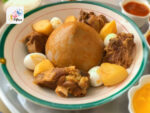
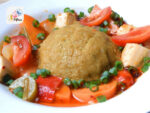
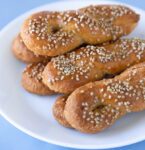
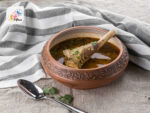
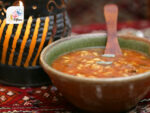
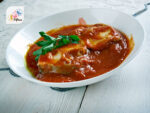

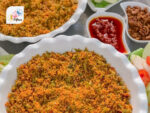

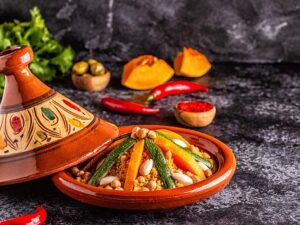
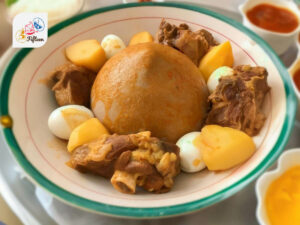
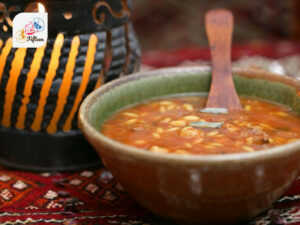
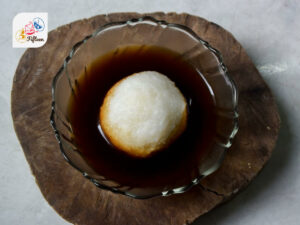
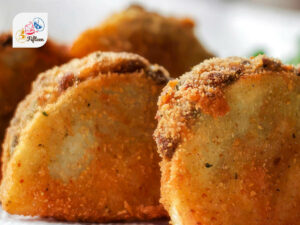
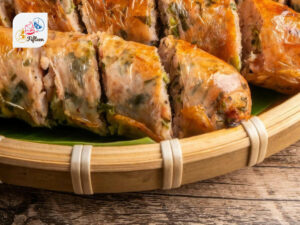
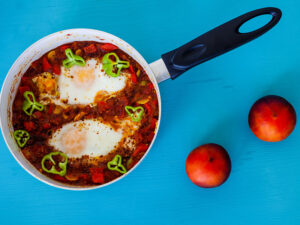
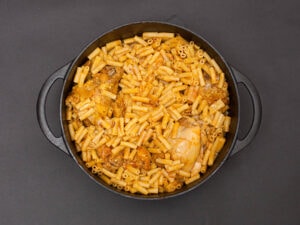
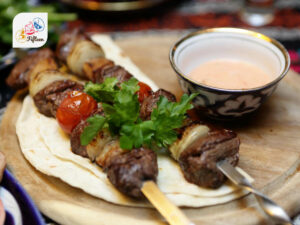

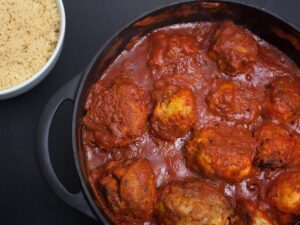
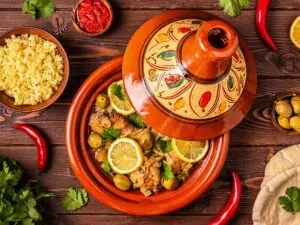
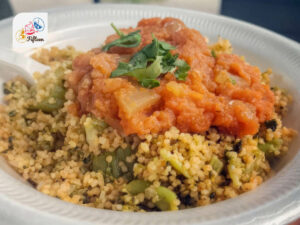
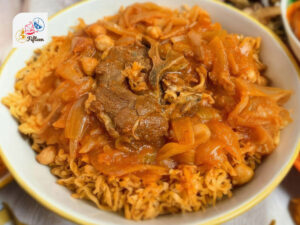
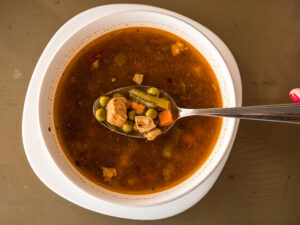
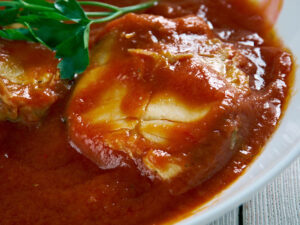

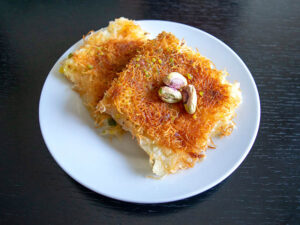
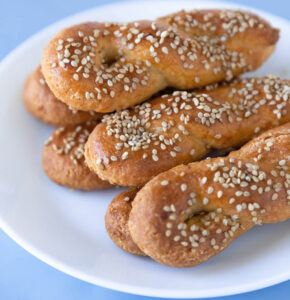
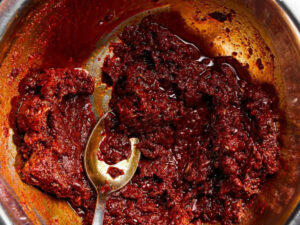
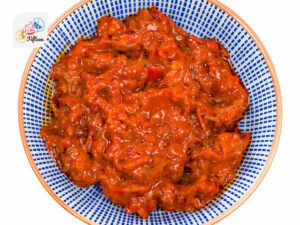
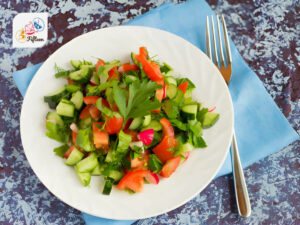
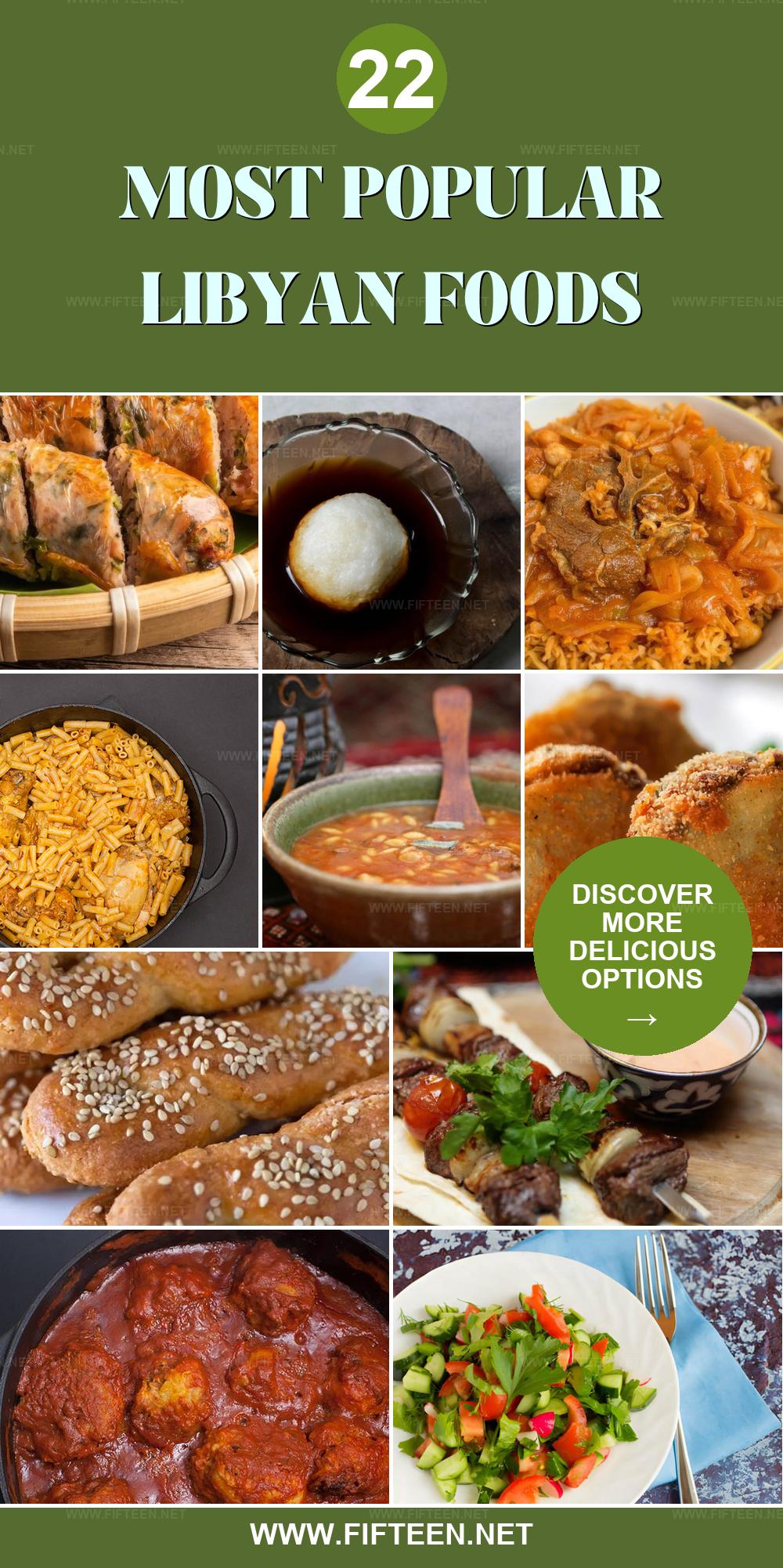
Jamie Scott
Editor in Chief, Senior Content Writer
Expertise
Home Cooking, Meal Planning, Recipe Development, Baking and Pastry, Food Editor, Cooking-video Maker, Western Food Evaluation Expert
Education
Le Cordon Bleu College of Culinary Arts
Local Community College, New York, NY
Jamie Scott is a skilled culinary expert and content creator specializing in Western cuisine. With over 15 years in the culinary field and formal training from Le Cordon Bleu, Paris, Jamie deeply understands how to blend nutrition with delicious flavors. His passion for cooking matches his commitment to making healthy eating accessible and enjoyable.
On Fifteen.net, Jamie brings a fresh perspective to classic dishes and beverages, offering readers insightful recipes, cooking tips, and a fresh view on meal planning that emphasizes taste, health, and simplicity.